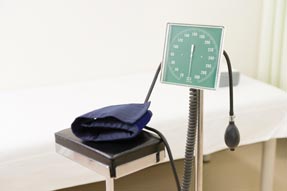Warning about different doses for 2 forms of posaconazole
This update covers a warning that differences in dosing regimens between the 2 oral formulations of posaconazole (Noxafil) have resulted in dosing errors.
Recalls and warnings
A warning that differences in dosing regimens between the 2 oral formulations of posaconazole (Noxafil) have resulted in dosing errors. Since the November 2013 approval of the delayed-release tablets, the FDA has received 11 reports of the wrong formulations being prescribed and dispensed to patients. One case resulted in death, and 1 case resulted in hospitalization. Reports indicate that these outcomes were a result of clinicians not knowing that an oral suspension and a delayed-release tablet cannot be substituted for each other without adjusting the dose. The drug labels have been revised to indicate this information, and prescribers should specify dosage form, strength, and frequency on all prescriptions for posaconazole.

A recall of 2 lots of intravenous solutions because of the potential presence of particulate matter. The affected lots were of 0.9% sodium chloride injection in a 250-mL Viaflex container and 70% dextrose injection (2,000 mL). In each case, the particulate matter was determined to be an insect prior to patient administration, and no related adverse events have been reported.
Approvals
Insulin glargine injection (Basaglar), a long-acting human insulin analog, for improving glycemic control in adults with type 1 or type 2 diabetes. The drug is administered subcutaneously once daily at the same time every day. Its similarities to an already-approved insulin glargine injection (Lantus) allowed it to be the first insulin product approved through an abbreviated approval pathway. In 2 clinical trials of the drug, the most common adverse reactions were hypoglycemia, allergic reactions, injection-site reactions, lipodystrophy, itching, rash, edema, and weight gain. As with any insulin, severe allergic or skin reactions may occur. This drug should not be used during episodes of hypoglycemia or in patients with hypersensitivity to insulin glargine or 1 of its ingredients.
Selexipag (Uptravi) tablets to treat pulmonary arterial hypertension (PAH). The oral prostacyclin receptor agonist decreases pressure in the lungs' blood vessels by relaxing muscles in the vessel walls and dilating the vessels. About 1,200 clinical trial participants were randomized to selexipag or placebo for a median treatment time of 1.4 years. Those taking the orphan drug were less likely to experience disease progression and less likely to be hospitalized for PAH than those taking the placebo. Common side effects include headache, diarrhea, jaw pain, nausea, myalgia, vomiting, extremity pain, and flushing.
Lesinurad (Zurampic) in combination with a xanthine oxidase inhibitor to treat hyperuricemia associated with gout. The drug helps the kidneys excrete uric acid by inhibiting the function of transporter proteins involved in uric acid reabsorption. In 3 placebo-controlled studies involving about 1,500 participants, those taking the drug with a xanthine oxidase inhibitor showed reduced serum uric acid levels compared to those taking placebo. The most common side effects include headache, influenza, increased blood creatinine level, and gastroesophageal reflux disease. The drug has a boxed warning on the risk for acute renal failure, which is more common when it is used without a xanthine oxidase inhibitor and in higher-than-approved doses. The FDA is also requiring a postmarketing study to further evaluate the drug's renal and cardiovascular safety.
An expanded indication for the Integra Omnigraft Dermal Regeneration Matrix to treat certain diabetic foot ulcers that last longer than 6 weeks. The device, which is made of silicone, cow collagen, and shark cartilage, covers the ulcer and allows skin and tissue to regenerate and heal the wound. Its new indication is based on a clinical study that showed it improved ulcer healing compared to standard diabetic foot ulcer care (51% vs. 32% of patients, respectively, had healed ulcers after 16 weeks). Adverse events included infections, increased pain, swelling, nausea, and new or worsening ulcers. The device should not be used on infected wounds or in patients with allergies to bovine collagen or chondroitin.
The Fenix Continence Restoration System to treat fecal incontinence in patients without medical or other surgical options. The system has 3 components: an implant, an anal sphincter sizing tool, and an introducer tool. In a study of 35 adults, 62.9% of participants experienced a reduction of fecal incontinence episodes by half or more after 12 months. In addition, 54.3% experienced a reduction in fecal incontinence days by half or more, and 37.1% experienced a reduction in urgent episodes by half or more. Adverse events include pain, infection, impaction or defecatory disorder, device erosion, device removal/reoperation, and bleeding. The system should not be implanted in patients with titanium allergies, and the sizing and introducer tools should not be used in those with allergies to titanium, stainless steel, nickel or ferrous materials. The implant is considered magnetic resonance unsafe.
Miscellaneous
Two final orders to strengthen the data requirements for surgical mesh for the transvaginal repair of pelvic organ prolapse. One order involves reclassifying the medical devices from class II to class III, indicating higher risk. The second order requires manufacturers to submit a premarket approval application to demonstrate the safety and effectiveness of surgical mesh for this indication. The orders do not apply to surgical mesh for other indications, such as stress urinary incontinence and abdominal repair of pelvic organ prolapse. The FDA continues to monitor long-term outcomes through postmarket surveillance.




